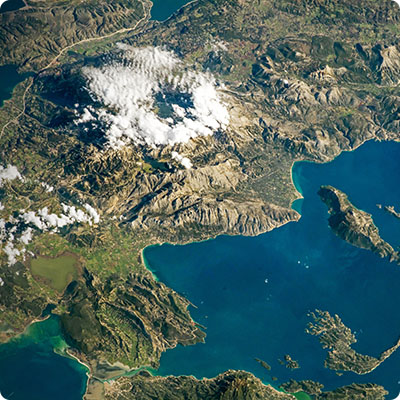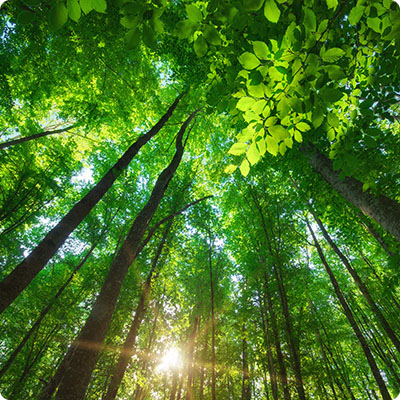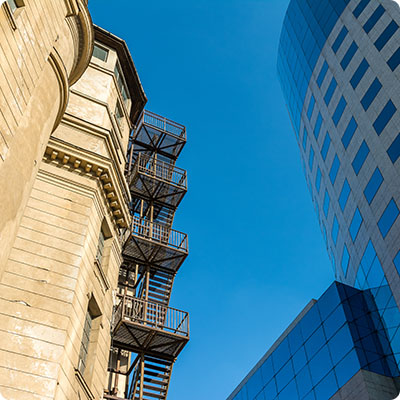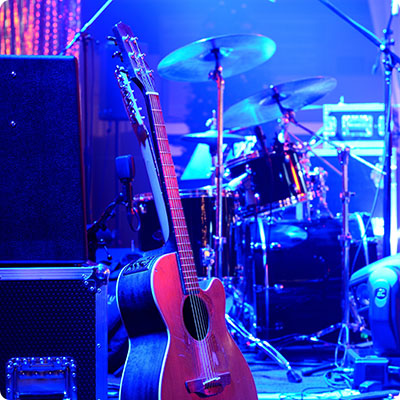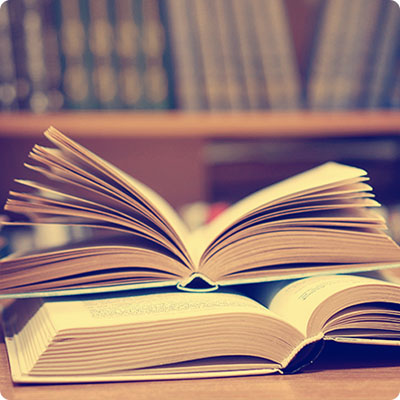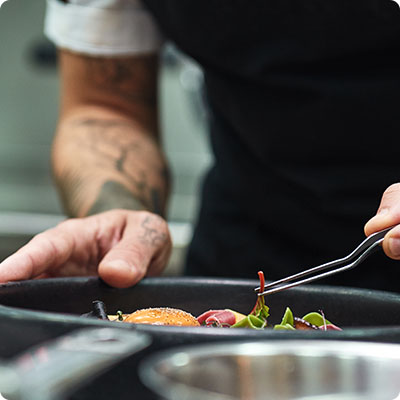Traditional music
In Kuala Lumpur or Borneo, the music reflects the multi-cultural nature of the territory. The latter may not be very large, but it is marked by diverse influences (Thai, Filipino, Chinese, Portuguese and Indian, among others).
In Malaysia, whether in Kuala Lumpur or in Sabah and Sarawak on Borneo, the syncretic music resulting from this crossbreeding often doesn't mix with traditional music bands. The latter is the result of rituals cultivated by numerous ethnic groups, in which we find instruments typical of Malaysia: kediri mouth organ (or koloreh, or sumpotan depending on the tribe), odeng Jew's harp, nasal flute, whistle, rattle, sape lute, gongs... Traditional music is played during funeral ceremonies, hunting returns, shamanic or patriotic rituals.
Of all the instruments, the most emblematic is undoubtedly the gamelan. It is best known throughout the world for its Indonesian practice. The instrument can be found all over the country, in Brunei, Malaysia and Indonesia. In all cases, the gamelan is made up of several percussion instruments, such as the saron (metallophone), gambang (xylophone) and gendang (drums). It's the repertoire that differs from one culture to another: a dozen pieces have been regularly played for decades in Malaysia. Recently, however, Malay composers have been adding to this heritage, making it possible to embellish festivities such as royal ceremonies. In Indonesia, each village has its own variant of gamelan and its own uses. Entire orchestras are built around the gamelan, but sometimes it simply accompanies dance or theater.
In Kalimantan, the Indonesian territory of Borneo, kendau is the predominant musical aesthetic. This polymorphous song is sung by men during harvesting, by a choir or to accompany a dance.
On the Malaysian side, nobat, which is royal court music performed by six musicians (playing the drum, gong, nafiri and serunai, which are a kind of oboe); ghazal, sung and romantic poetry of Persian and Indian origin, brought to light by artists such as zither player Samuel J. Dass and singer Kamariah Noor; but also the keroncong, derived from the ukulele, which arrived in Malaysia in the 15th century, giving rise to a style in its own right based on traditional songs accompanied by this little guitar, but also by a gamelan, sometimes a violin, a flute or a cello. The keroncong had a nationalist and popular function through the scope of its songs. In the 1950s, the Orkes Keroncong Fajar Baru Kajang ensemble made its mark on the public and is still considered one of Malaysia's best-known groups. In the 15th century, the dondang sayang also made a name for itself at the royal court: among the musicians, a violinist gives voice to a singer. Finally,asli combines Malay songs and rhythms played on instruments that are sometimes traditional, sometimes Western, sometimes both. It's this mix of genres that characterizes asli, the specialty of singer Rosiah Chik (nicknamed Mal We), made famous in the 1960s.
In Brunei, traditional instruments such as the gela (a variant of the violin made from fish skin) and the kledi (a trumpet made from bamboo and coconut) have been preserved and continue to be played. Among the sultanate's traditional aesthetics, the Adai-adai, a song sung by fishermen at sea, is emblematic of the country.
Traditional music can be heard on a number of occasions throughout the country: at the Istana Budaya in Kuala Lumpur, during the Rainforest World Music Festival in Kuching, in Sarawak, on the island of Borneo, which gives pride of place to world music and local music in particular.
Classical music
In Malaysia, philharmonic music holds an important place in the hearts of the population. In recent years, public interest in classical music has even been on the rise, with a strong focus on the piano and violin. Contemporary music is also a growing field, much more so than classical music: many Malaysian artists are leaving to pursue their careers abroad. These include Chong Kee Yong, Yii Kah Hoe and Adeline Wong. Ng Chong Lim, from Kuala Lumpur, is also a renowned pianist. Composer Saidah Rastam has penned numerous works, ranging from opera to traditional pieces. If many of Malaysia's leading musical figures have succeeded in making a name for themselves, it's also thanks to the many structures that enable young talent to make their mark and perform. Such is the case with the Malaysian Philharmonic Orchestra, which has seen many artists make their mark, and the Petronas Philharmonic Hall, located in the Petronas Towers in Kuala Lumpur.
In Brunei, classical music concerts have been scheduled at the Brunei Music Society for over 40 years.
Current music
While Indonesia blows a resolutely rock wave to all its territories, Borneo is also home to kroncong (a form of Indonesian hip-hop) and dangdut (a singular form of folk music, sometimes with a strong protest element).
In Malaysia, it was the asli style that set the tone for the emancipation of music from more traditional trends. Inspired by Western pop music and the principles of Malay opera, the first Malay popular music titles emerged in the 1930s, such as Momo Latiff's "Tudung Periok".
P. Ramlee went on to make a name for himself: a native of Kuala Lumpur, the star made a name for himself through popular music competitions and Malaysian cinema. The country then followed Western musical trends: the sunny arrival of the 1960s, epitomized to this day by Mr. Osman's "Suzana"; the freedom of the 1990s, with the rise of icons such as Sheila Majid, Jamal Abdillah (a true Malaysian pop star), Zainal Abidin and, later, Yuna (a pop-R&B artist who is particularly visible on the international scene).
While all the signs seem to be green, the Malaysian government remains vigilant when it comes to music releases, not hesitating to censor any subject deemed "indecent" by the political establishment. As a result, rock and rap are finding it harder to make their mark. However, a few rap groups, such as Krash Kozz and SonaOne, made a name for themselves in the 1980s.
Concerts of all styles are scheduled daily in Kuala Lumpur, notably in the many clubs and concert halls. They are rarer in Borneo, but the island is not inactive when it comes to contemporary music. On the Malaysian side of the island, Kuching hosts major festivals such as Borneo Sonic, which brings together local talent and international artists on the same stage.
Dance
Borneo is home to a number of traditional dances. Kendau has its origins in the Indonesian part of the island, and takes many forms, with or without singing to accompany the movements. Brunei's Kedayan communities wear the colors of theAduk-Aduk, a ceremonial dance that takes place at the end of the harvest season, accompanied by percussion instruments. Malaysia and Brunei share the practice of the jipin dance, performed by six men and women, interpreting a choreography punctuated by gongs.
The Malays of Kalimantan also claim numerous dances, including the mandau, performed with knives and shields.
Theater
Borrowed from Thailand and also originating in Indonesia, wayang kulit shadow theater is embodied by articulated puppets. This ancient art form is also widely practiced in Malaysia, and is considered a major art form in Indonesia. Entertaining, the show relies on puppeteers, called dalang, who require masterful dexterity and must make their own puppets from goat (or buffalo) leather. In front of the orchestra, the dalang plays all the roles and manipulates the various characters while telling the story, generally drawn from the Indian legend of the Ramayana. The dalang are considered artists in their own right, and try to keep their activity alive.
Depending on the territory, different musical variants can be observed.
In Malaysia, other theatrical forms are widespread, notably mak yong, a hybrid form of performance that combines dramatic art, vocal and instrumental music, gestures and elaborate costumes. This royal art form, which has become popular and even associated with healing rituals, is still performed today by a few troupes, although it has become much rarer than in the first half of the 20th century. Lasting an average of three hours, the play is based on a narrative, punctuated by an orchestra, dance, monologues and singing sessions. Bangsawan (also known as mendu) is a kind of Malaysian opera, combining music, dance and drama. This art form became extremely popular with the advent of radio and television, and was considered the people's entertainment par excellence. It was subsequently eclipsed by cinema, although it can still be seen from time to time in theaters such as the Kuala Lumpur Performing Arts Centre (KLPAC), which offers a wide range of performing arts, and at festivals such as the annual Kuala Lumpur Festival, which showcases Malaysia's traditional performing arts.
In Brunei, theater is also very popular. They can see plays at the National Theatre Festival, held annually in Darussalam.
